|
|
|
||||||||||||||||||||
|
The Soyuz-5 launch vehicle Special section written and illustrated by Anatoly Zak; Editor: Alain Chabot The Soyuz-5 next-generation space launcher was designed to replace the medium-class Zenit vehicles built in Ukraine and provide Russia with a first-stage booster for the future super-heavy rocket. Roskosmos hoped to that the low-cost vehicle would complement the Angara family of rockets for domestic needs and would make Russia competitive again on the international launch market.
The Soyuz-5 rocket family as of 2017 (left to right): The launch vehicle for the PTK Federatsiya spacecraft; a launch vehicle with the Block DM-SL upper stage for the Sea Launch platform; a launch vehicle with Block DM-SLB upper stage compatible with launch pad at Site 45 in Baikonur Cosmodrome. As of 2020, only Baikonur-based version of the rocket had been allocated any significant funding. Soyuz-5 rocket at a glance:
|
 |
||||||||||||||||||||
| DEVELOPMENT HISTORY | |||||||||||||||||||||
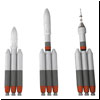 |
Despite budget cuts at the end of 2015, the Russian government promised to give the go ahead to the development of a new launcher family, which could finally replace the medium-class Soyuz and Zenit rockets. Moreover, the new rocket was also positioned as a stepping stone toward the super-heavy booster. |
||||||||||||||||||||
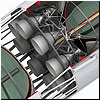 |
In January 2016, representatives of Roskosmos met with their Kazakh counterparts to discuss the fate of the long-delayed Baiterek project and directed the industry to consider various alternatives to the Ukrainian-built Zenit. By the middle of the year, the industry came up with a concept dubbed Sunkar, or "falcon" in Kazakh. |
||||||||||||||||||||
 |
In 2017, engineers at RKK Energia began work on the preliminary design of the new medium-class launch vehicle to replace Zenit. Designated Soyuz-5, the new rocket was seen at the time as a carrier of Russian cosmonauts into orbit and paving the way to a super-heavy rocket. The Kremlin also saw the vehicle as the response to the challenges on the commercial launch market. |
||||||||||||||||||||
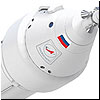 |
2018: Preliminary design (INSIDER CONTENT) By April, the Russian space industry had completed the preliminary design of the Soyuz-5 launch vehicle, designed to defend Russia's shaken positions on the international commercial launch market, which is increasingly dominated by the American Falcon rockets. |
||||||||||||||||||||
 |
2019: Detailing the design (INSIDER CONTENT) During 2019, the Roskosmos States Corporation had the difficult task of initiating the full-scale development of the next-generation Soyuz-5 rocket, while, simultaneously, completing the production line for the Angara family and funding its upgrades. |
||||||||||||||||||||
 |
2020: Soyuz-5 turns to metal (INSIDER CONTENT) During 2020, RKTs Progress was moving ahead with setting up the manufacturing line for the Soyuz-5 medium-size launch vehicle also known as Irtysh, despite some lingering doubts about its operational prospects and commercial competitiveness. |
||||||||||||||||||||
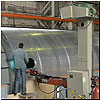 |
2021: The Soyuz-5 rocket project enters experimental phase (INSIDER CONTENT) The Russian space industry finalized the design of the Soyuz-5 launch vehicle and began ground testing of its components, while Roskosmos worked on closing a deal with Kazakhstan for the rocket's launch facility. |
||||||||||||||||||||
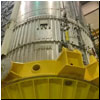 |
2023: The Soyuz-5 rocket might need a new launch pad (INSIDER CONTENT) Due to actions of the Kazakh government, likely in response to the war in Ukraine, the Soyuz-5 project ran into a costly dilemma over its launch site in 2023, with the potential to derail the program. |
||||||||||||||||||||
 |
2024: The development presses ahead (INSIDER CONTENT) During 2024, RKTs Progress said it had continued work on the new-generation Soyuz-5 rocket, despite seemingly stalled development of its launch facility in Kazakhstan just a year from promised first test flight. |
||||||||||||||||||||
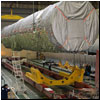 |
UPDATE, May 22: 2025: Final tests (INSIDER CONTENT) In March 2025, the first fully integrated first stage of the Soyuz-5 rocket departed Samara for live firing tests, while Roskosmos reconfirmed its commitment for the first launch of the rocket before the end of the year. |
||||||||||||||||||||
| SOYUZ-5 TECH | |||||||||||||||||||||
From the publisher: Pace of our development depends primarily on the level of support from our readers! |
|||||||||||||||||||||
|
The most unusual structural feature of the Soyuz-5 launch vehicle will be its first stage, which combines the caliber from the two "classic" Soviet rockets -- Zenit and Proton. |
|||||||||||||||||||||
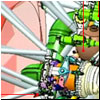 |
Stage I propulsion: RD171MV (INSIDER CONTENT) To propel the first stage of the next-generation Soyuz-5 launch vehicle, Roskosmos chose a modified version of the mighty RD-171 engine inherited from the Energia and Zenit rockets. |
||||||||||||||||||||
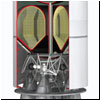 |
The second stage of the Soyuz-5 launch vehicle will be propelled by a pair of two-chamber RD-0124M engines, forming a four-chamber propulsion system, which can be used to control the trajectory of the flight with a steering mechanism developed at RKTs Progress in Samara. |
||||||||||||||||||||
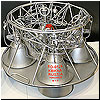 |
Stage II propulsion: RD-0124MS (INSIDER CONTENT) In 2017, NPO Energomash announced a new version of the RD-0124 engine, which was designated RD-0124M and intended for the second stage of the Sunkar/Soyuz-5 project. Despite its name, the new version was radically different from its predecessors, requiring major efforts and time for its development. |
||||||||||||||||||||
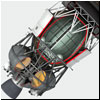 |
During its early launches, the two-stage Soyuz-5 booster combination was expected to be topped with a space tug inherited from the prolific Block DM family of upper stages. |
||||||||||||||||||||
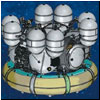 |
To boost the capabilities of the Soyuz-5 in accessing geostationary orbits, Roskosmos also made plans to equip Soyuz-5 with an upgraded version of the Fregat-SB space tug, which was previously flying on Zenit rockets based in Baikonur. |
||||||||||||||||||||
| PRODUCTION AND LOGISTICS | |||||||||||||||||||||
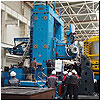 |
How Soyuz-5 is built (INSIDER CONTENT) The Soyuz-5 project gave Roskosmos an opportunity to introduce the latest manufacturing techniques in the early stage of the rocket development and, hopefully, avoid the kind of lengthy transition to a modern production processes that had marred the previous-generation Angara program. |
||||||||||||||||||||
 |
Transporting Soyuz-5 (INSIDER CONTENT) Early in the design process, developers chose a diameter of 4.1 meters for the booster stages of the Soyuz-5 rocket. It happened to be the maximum size, which could fit on a railway trailer, thus allowing to transport the rocket's stages from its planned manufacturing site at RKTs Progress in the southern Russian city of Samara. |
||||||||||||||||||||
| LAUNCH AND SUPPORT INFRASTRUCTURE | |||||||||||||||||||||
|
The Soyuz-5 project depended on the government of Kazakhstan for funding the conversion of the Zenit-M facility in Baikonur for the new rocket within the Russo-Kazakh Baiterek joint venture. |
|||||||||||||||||||||
 |
Moving to Vostochny (INSIDER CONTENT) Roskosmos considered eventually building another launch pad for the Soyuz-5 rocket as part of the infrastructure for the super-heavy rocket at the nation's Vostochny spaceport. |
||||||||||||||||||||
| SOYUZ-5 DERIVATIVES | |||||||||||||||||||||
 |
In April 2017, Russian space officials dropped plans to launch the next-generation spacecraft on the modified version of the Angara-5 rocket and instead opted for the yet-to-be developed Soyuz-5 booster recently conceived within the Feniks and Sunkar projects. |
||||||||||||||||||||
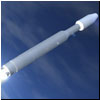 |
Soyuz-6 variant (INSIDER CONTENT) By 2019, during the ongoing search for an engineering path toward a super-heavy launcher, Roskosmos identified three smaller vehicles which could serve as stepping stones in the decade-long program. One of them was the Soyuz-7 — an entirely new concept, which by September 2019 was renamed Soyuz-6. |
||||||||||||||||||||
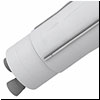 |
Soyuz-7 variant (INSIDER CONTENT) Also in 2019, Roskosmos assigned designation Soyuz-7 to a modified version of the Soyuz-5 rocket compatible with the Sea Launch platform. |
||||||||||||||||||||
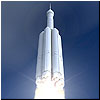 |
From the outset of the Soyuz-5 project, it was seen as a building block of a future super-heavy rocket which could rely on the first stage of Soyuz-5 to assemble a rocket cluster with a payload of around 100 tons to the low Earth orbit. |
||||||||||||||||||||